Tags
19th century, Abraham Small, Alaska, American, animals, Arctic, Atlantic Ocean, bookplate, botany, British Royal Navy, Brooklyn, Canadian Arctic Archipelago, climate, Department of Botany, drawings, Elisha Kent Kane, Emily Dickinson, Europe, explorers, Exquimaux, fauna, flora, Fury, George Frances Lyon, Greenland, Gripper, Hecla, Henry Parkyns Hoppner, ice, icebergs, illustrations, Inuit, James Christie, James Clark Ross, James Walsh, John Ross, Keeper of the Herbaria, lichen, London, Lyuba Basin, moss, New York, Nicholas Polunin, North America, Northwest Passage, Norwegian, Oxford, Philadelphia, Roald Amundsen, scurvy, ships, Sir John Franklin, William Edward Parry, William Parry
As if some little Arctic flower
Upon the polar hem –
Went wandering down the Latitudes
Until it puzzled came
To continents of summer –
To firmaments of sun –
To strange, bright crowds of flowers –
And birds, of foreign tongue!
– Emily Dickinson
The Northwest Passage was the name given to the sea route which connects the Atlantic Ocean to the Pacific along the northern coast of North America via the waterways in the Canadian Arctic Archipelago. Toward the end of the 15th century and into the 20th century, colonial powers from Europe sent their best explorers on countless attempts to discover a commercial route, with many failing and turning back and others ending in disaster. The first successful journey was made in 1906 by a Norwegian explorer named Roald Amundsen, completing the passage from Greenland to Alaska.
Prior to Amundsen, notable captains such as John Ross, Elisha Kent Kane, James Clark Ross and William Parry explored separate parts of the Northwest Passage in the first half of the 19th century. Parry’s first voyage was, without a doubt, the most successful in the search for the passage and his second and third attempts continued to uncover new information about the mysterious archipelago, including research on climate, flora and fauna. In fact, the notes taken by Parry and his shipmates and recorded in three separate journals contributed to crucial research in botany, among other natural sciences.
Journal of a Voyage of the Discovery of a North-West Passage from the Atlantic to the Pacific
William Edward Parry
Philadelphia: Abraham Small, 1821
First American Edition
G635 P3 A3 1821
Between 1821-1825 three ships from the British Royal Navy, the Fury, Hecla, and the Gripper, took three separate journeys into the Arctic under the leadership of Captain Parry and Captains John Ross and George Frances Lyon. While their expeditions proved to be successful, they were not without tragedy as scurvy became common and ships were often stuck in ice for weeks on end. Narratives of the journeys were published in London and Philadelphia, respectively, with detailed accounts of the days on board as well as their interactions with the Inuit, described as Esquimaux in the journals.
Journal of a Third Voyage of the Discovery of a North-West Passage from the Atlantic to the Pacific
William Edward Parry
Philadelphia: H.C. Carey I. Lea, 1826
First American Edition
G650 1824 P31
A Brief Narrative of an Unsuccessful Attempt to Reach Repulse Bay
G.F. Lyon
London: J. Murray, 1825
First Edition
G 650 1824 L9 1825
In addition, the journals included spectacular illustrations of the ships amid the looming icebergs and intricate appendices which accounted for the varieties of animals and plants that they encountered along the way. Among one of the shipmates that helped with the drawings and collecting data was Henry Parkyns Hoppner, listed as ‘lieutenant’ on the Griper in the first journal’s roster. Hoppner accompanied Parry on all three expeditions, first as a lieutenant on the Griper and Hecla, and later promoted to second in command on the Fury in the last voyage. Although Hoppner never received the kind of international acclaim as his Captains, his creative and artistic role on board as illustrator and actor proved to leave an impression.
Collection of Plants Found in the Arctic Regions…
Henry Parkyns Hoppner (1795 – 1833)
Publisher not identified, 1821
QK 474 H66
Impressions are also what we find in this small and unassuming book. From each of the pressed flowers, a ghostly accompaniment is imprinted on the opposite page, hinting at traces of life as much from the colorful flowers as from the hands of the shipmate who collected them. Impressions are also present as the handwritten notes inked on the beginning and end pages of the book. With no bibliographic information, we can only look to a small note which describes the book as “a collection of plants found in the Arctic Sections … made by Captain Hopner … 2nd in command of H.M.S. “Fury” … The “Fury” and “Hecla” (Captain Lyon) sailed to discover the N.W. passage May 1821.” Following the description, the book is addressed to Hoppner’s friend James Christie.
Attached to a page, there is also a miniature envelope that holds “moss which Franklin and his party had as their only food.” It is possible that this note alludes to the failed overland expeditions in the Arctic lead by Sir John Franklin between 1819-1822. During this time, Franklin lost more than half of the men in his party to starvation and, in order to survive, the remainder of his crew ate lichen, with some attempting to eat their own leather boots. Furthermore, there were rumors of cannibalism and at least one murder reported.
In addition to the handwritten notes, a bookplate on the first page suggests that sometime during the mid-20th century the book was held in the Department of Botany in Oxford while Nicholas Polunin was the Keeper of the Herbaria, which is now almost four hundred years old. While lecturing at Oxford, Polunin traveled to the Canadian Arctic as a botanist on an expedition that discovered the last major islands to be added to the world’s map.
Polunin was well recognized for his research and publications, specifically Circumpolar Artic Flora which was published in 1959. This book helped inspire James Walsh’ modern herbaria, The Arctic Plants of New York City, which “combines personal letters, poetry, prose essay, scholarly research, botanical exploration and artistic investigation,” of plants gather in Brooklyn, New York. The bibliography includes a reproduction of the index from Polunin’s work, in which the author has marked in red pen the eighty-eight Arctic plants that occur in New York City.
The Arctic Plants of New York City
James Walsh
New York: Granary Books, 2015
QK177 W35 2015
From the publisher’s website: “The Arctic Plants of New York City […] ranges from the Doctrine of Signatures to the sleep of plants, and from Jean-Jacques Rousseau and John Muir on mental travel to Giacomo Leopardi and Charles Baudelaire on the necessity of illusion for art and life. Interspersed throughout the book are a number of two-page spreads that focus on a single plant, such as Common Mugwort, with a mounted botanical specimen of that plant surrounded by texts drawn from earlier writers on botany and set in verse, creating a field of word-objects interacting with plant-objects. The letters that open the book lead into a prose essay that touches on the souls of plants, their use in medicine and as spurs to mental travel, their transience, their migrations, their meaning.” Written, designed, and letterpress printed by James Walsh, with eighteen botanical specimens pressed and mounted by the author. Bound by Daniel Kelm at Wide Awake Garage. Edition of forty copies, 34 of which are for sale.
~Contributed by Lyuba Basin, Rare Books

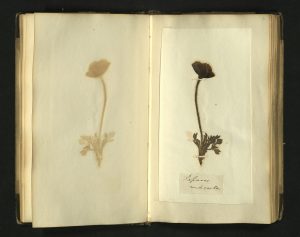
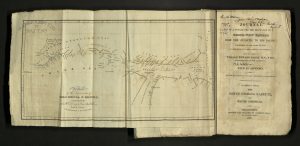
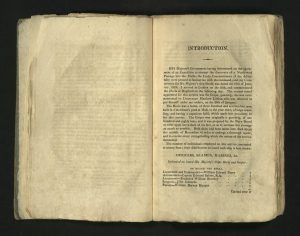
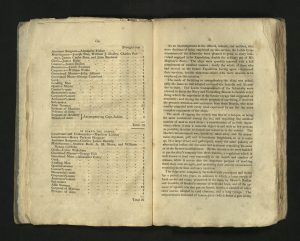
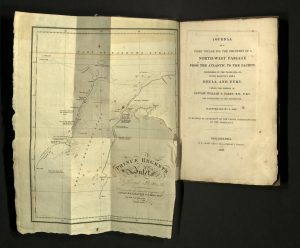
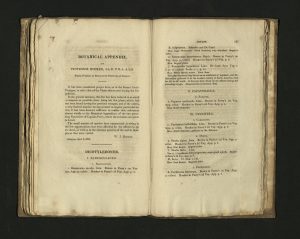
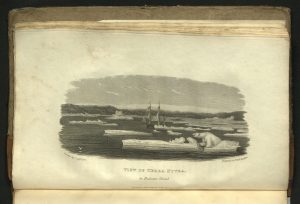
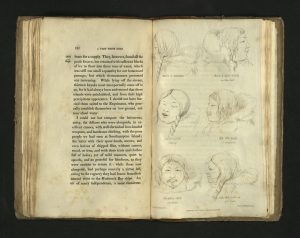
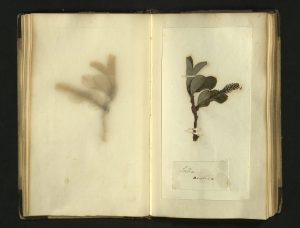
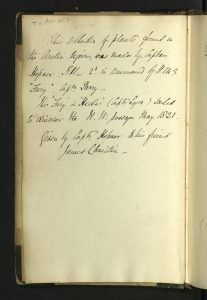
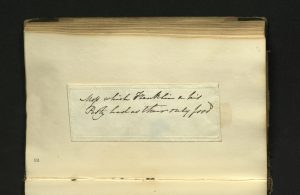
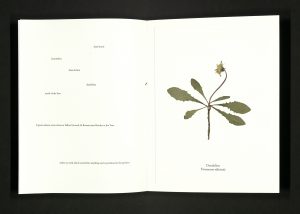
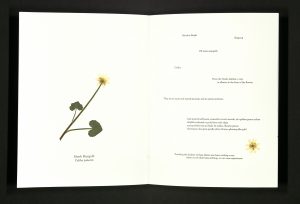
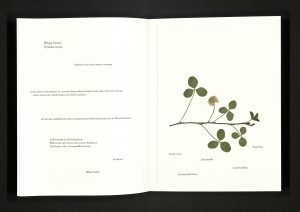
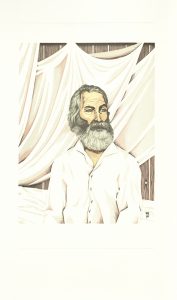
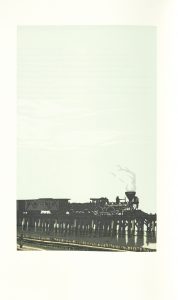
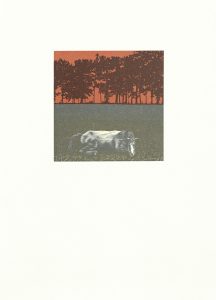
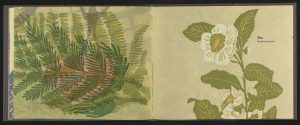
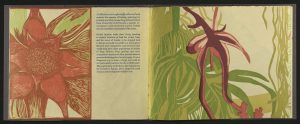
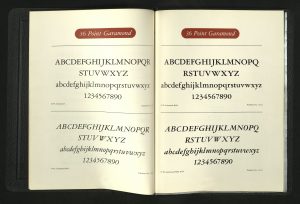
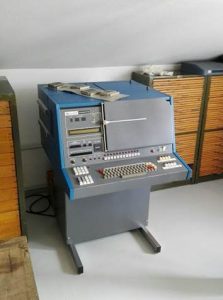
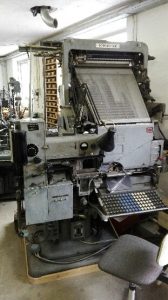
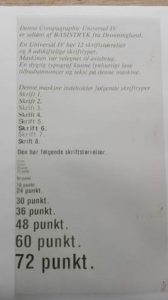
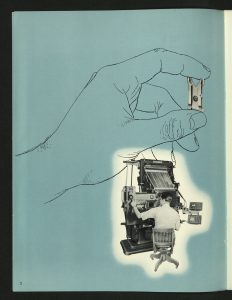
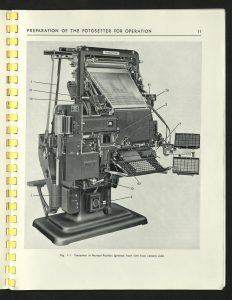
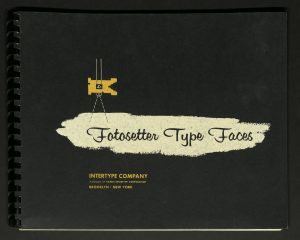
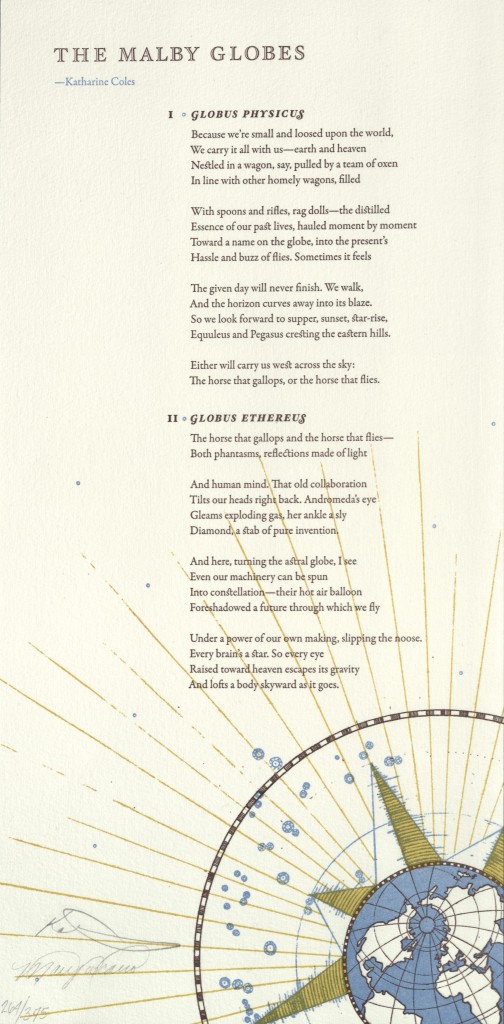


You must be logged in to post a comment.